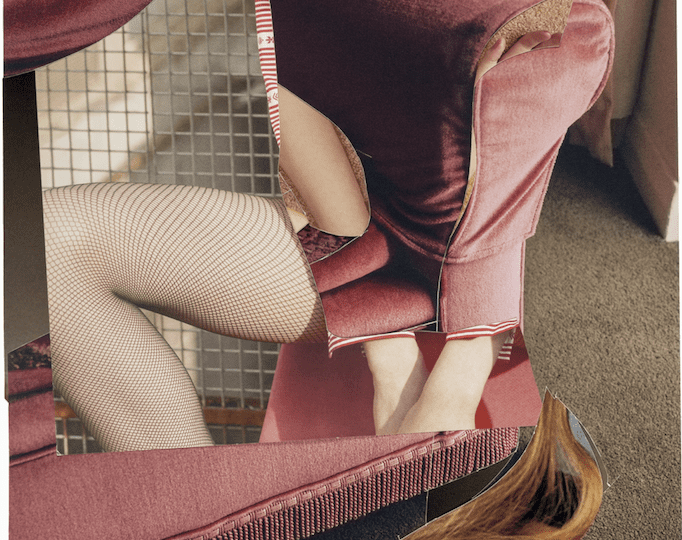Modes of Fabrication: Feature for Aesthetica
On an unspecified date in the 1960s, a young woman posed for a pin-up shot. Little did she know that decades later she would make an appearance in an artwork by Swedish artist Eva Stenram (b. 1976). If she were to see the image today, she might not even recognise herself. Only the legs are shown, one foot raised up, the other from the knee down, behind a white blind.
Figure in Sofa, 2020 © KYoung / courtesy The Ravestijn Gallery
In the original, the woman’s body features in full amidst the soft furnishings of a domestic interior. In the new version, Stenram has switched foreground and background, digitally extending the blind to obscure most of the figure – shifting the meaning entirely. It wasn’t a camera but the discovery of Photoshop in the late 1990s that sparked Stenram’s interest in photography. “I was fascinated by the ease in which I could mix different pictures together, causing folds in both space and time,” she recalls.
Stenram is amongst a wave of contemporary practitioners who, instead of capturing the world through their own lens, intervene in existing pictures, which they reuse and recompose. She features alongside 18 other artists in the group exhibition The Constructed Image, at The Ravestijn Gallery, Amsterdam. Jasper Bode, the gallery’s Director, developed the theme after noticing that several of his artists, including Inez & Vinoodh, Ruth van Beek and Koen Hauser, used fragmentary techniques, both analogue and digital. “I’ve always been interested in collage because you can push the hyperreality of what you’re looking at,” Bode says. “It lets you do things that in reality you can’t do.”
Still, artistic slicing and splicing isn’t new. It can be traced back to the early 20th century when Georges Braque (1882-1963) and Pablo Picasso (1881-1973) coined the term “collage” from the French verb coller, to stick or to glue. Cubist collage – using newspaper clippings and other materials – comprised a playful repurposing of found objects. The Surrealists, intrigued by psychoanalysis and dream theory, also used collage, much like automatic writing, to tap into the unconscious, unleashing meaningful juxtapositions between apparently unconnected elements. For the pioneers of photomontage, Dadaists such as Hannah Höch (1889-1978) and John Heartfield (1891-1968), it was a weapon of dissent. Höch deconstructed the sexism of the Weimar Republic from a female perspective, whilst Heartfield developed explicitly anti-fascist art by merging media cut-outs of Nazi politicians – a mantle carried forward into the 21st century by anti-war artist Peter Kennard or satirists like Cold War Steve…
